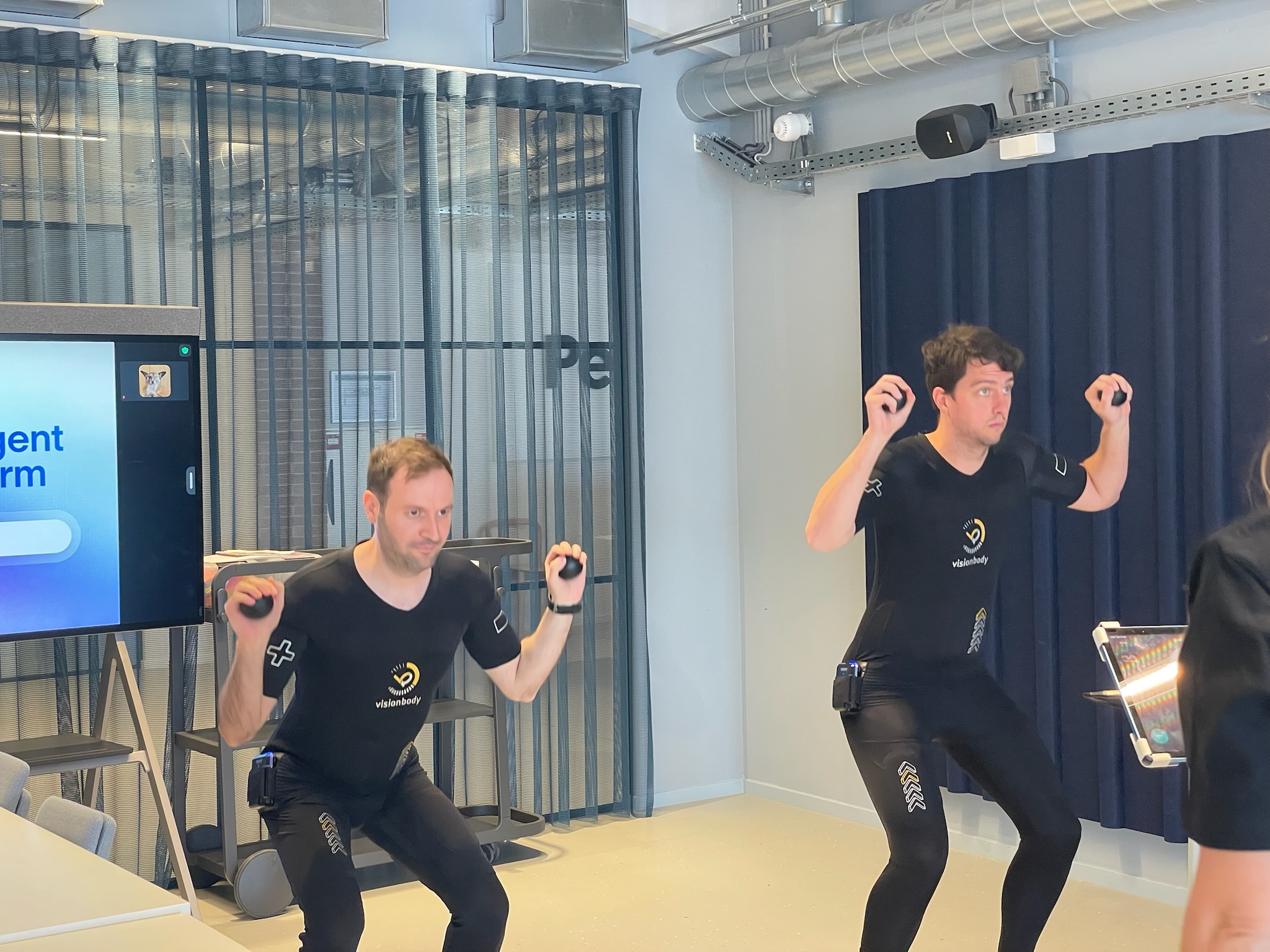Monday morning, 09:00. The posters are up, the fruit basket is ready, an inspirational talk has been booked. And yet it feels fragile. Many organizations recognize this: the vitality week starts with energy, but the effect dissipates as soon as the calendar fills up again.
This is not unwillingness; it is by design. Three patterns recur again and again:
- Fragmentation. Loose initiatives with no common thread produce loose experiences. Fun in the moment, hard to hold onto.
- Freedom. Inspiration without translation into behavior. People know what is good, but not how you do things differently tomorrow.
- Immeasurability. HR and management want to know what it delivers. Without data, wellbeing feels like a cost rather than sustainable performance.
Add to that: busy schedules, hybrid work, diverse preferences (from avid athletes to silent doubters). A standard package then quickly misses the connection. The result is a hype instead of change.
Yet every year we see organizations not letting go of this ambition. Not because they "should," but because it is strategically needed is: employee wellbeing is a prerequisite for focus, innovation and retention. So the question is not whether you do something with vitality, but how you organize it in such a way that it works for your people and your organization.
That question was also on the table at Personio. Not: "Can we program a fun week?" Well: "Can we establish a vitality program that gets people moving, is accessible, and whose effects we can see and learn from?"
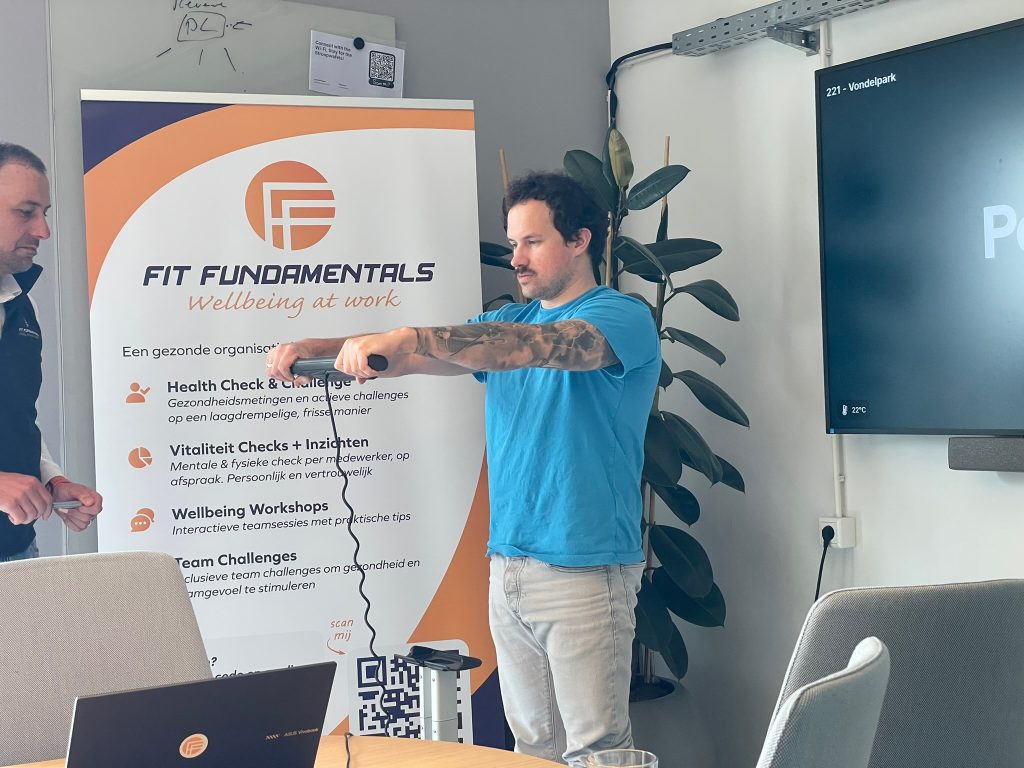
Why Personio chose more than a standard vitality program
Personio is not your average HR tech company. The level is high: pace, ambitions, international teams, and thus the bar for a Health Week. They were not looking for single events, but an experience with a clear logic: from inspiring to doing, from doing to sustaining, from sustaining to culture.
Together, we formulated clear design principles:
- Experiencing above explaining. Less sending, more join: moving around the office, practical sessions, immediate applicability.
- Personal leadership at its core. Vitality is not an afterthought; it is ownership of energy, recovery and focus.
- Activate, not charge. HR wants to be unburdened. So we handle organization, planning, communication and activation, with one point of contact.
- Digital + live = lasting. Linking live energy to a digital platform with workouts, mind fitness and master classes for continuity.
- Inclusive and approachable. Not just for the sporty. Variation in intensity and format so that everyone can join in.
- Measurable and instructive. Participation, feedback and behavioral indicators as a compass. Not to rebuke, but to improve.
Important: We did not promise a panacea. Not a silver bullet, but solid architecture for behavior change. That starts with a strong kick-off for energy and context, moves through tangible experiences to small, achievable steps, and is supported by the platform and coaching. Thus, wellness shifts from "a fun week" to a rhythm that fits the work reality.
What convinced Personio was not one wow part, but the coherence: a vitality program that builds logically, substantiates choices and HR noticeably relieved, without losing its soul. Inspiring, yes. But above all: doable, measurable and sustainable.
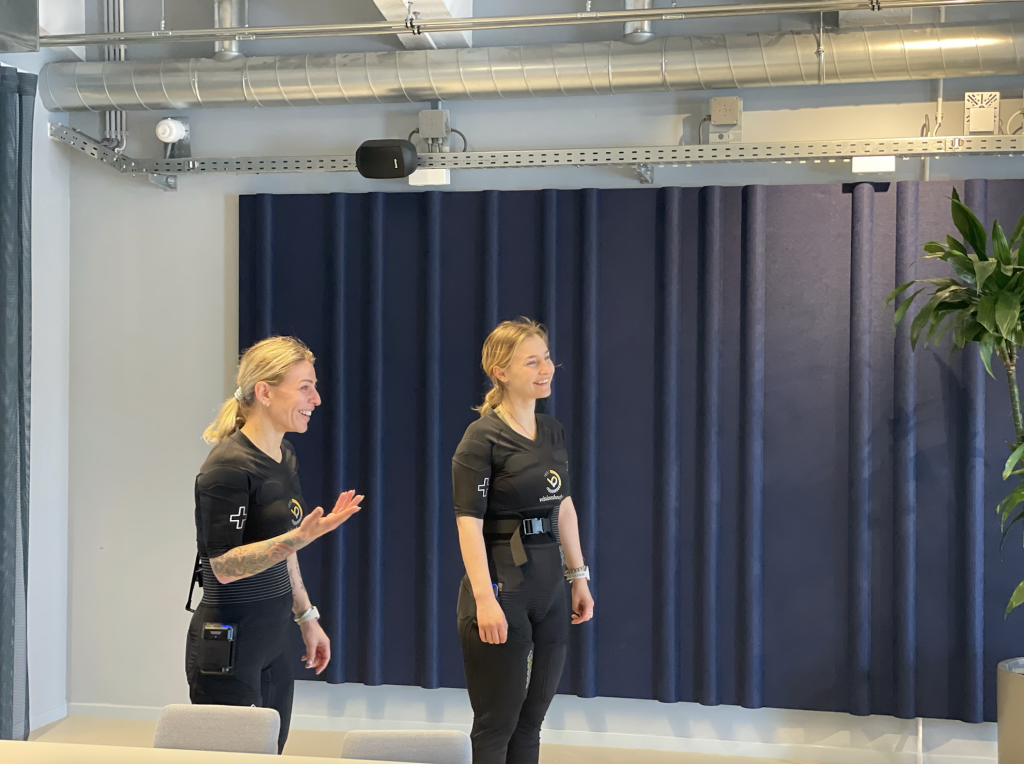
The Recharge360 approach in action
We began not with a list of individual activities, but with a architecture: what do we want people to experience, learn and do permanently? Together with Personio, we chose a flow that energizes on day one and builds rhythm for beyond. Live experience where possible, digital where it's smarter, and always approachable.
From kick-off to rhythm
The week started with a kick-off on location. We gave context (why vitality is crucial now), introduced the Recharge360 platform and invited everyone to small, achievable steps choose. No promises, but ownership: what do you want to try this week?
Then we built variety and repetition on a daily basis:
- Wellbeing analysis (organization-wide)
A light, privacy-conscious scan provided a starting image. Not to label, but to identify themes prioritize: where is energy, where is need? - Health checks & coaching (personalizing)
Brief measurements and 1-on-1 conversations translated intention into action. What fits your work week? Thus, vitality became concrete and achievable. - Moving around the office (reducing friction)
Workouts at the office between meetings: short, effective sessions that show that movement is not an extra project but a micro habit. - Morning plunge (experience above explanation)
Into the water together for a fresh start. Not compulsory, but binding. It made us feel what recovery and cold exposure can do for focus and energy. - EMS training (innovation excites)
Electro-muscle stimulation as an innovative experience for those seeking an extra incentive. Short, guided and safe - designed primarily to trigger curiosity. - Nutrition & health talks (directly applicable)
Practical sessions on health and nutrition: small choices with big effect. No dogmas, but concrete "do-this-morning" tips. - Digital deepening (continuity)
In the Recharge360 platform found staff workouts, mind fitness and master classes, even outside the live moments. This keeps the Health Week not during the week. - Team competition (social momentum)
Mini-challenges with teams provided playful behavioral activation. Not to have to win, but to gently push each other forward.
Activation without overloading
We sent clear communication through internal channels, with daily goals and micro-challenges. All opt-in, with variations in intensity. This is how inclusive it feels: from the athletic colleague to the cautious starter, everyone can participate at your own level.
Measuring what matters
We weren't just looking at attendance. We followed, among other things. participation by format, short pulse feedback, platform engagement and quotes from coaching. That doesn't deliver a "report for the sake of the report," but practical insights: what forms activate, at what times, with what follow-up needs. With this, HR can specifically build on instead of guessing again.
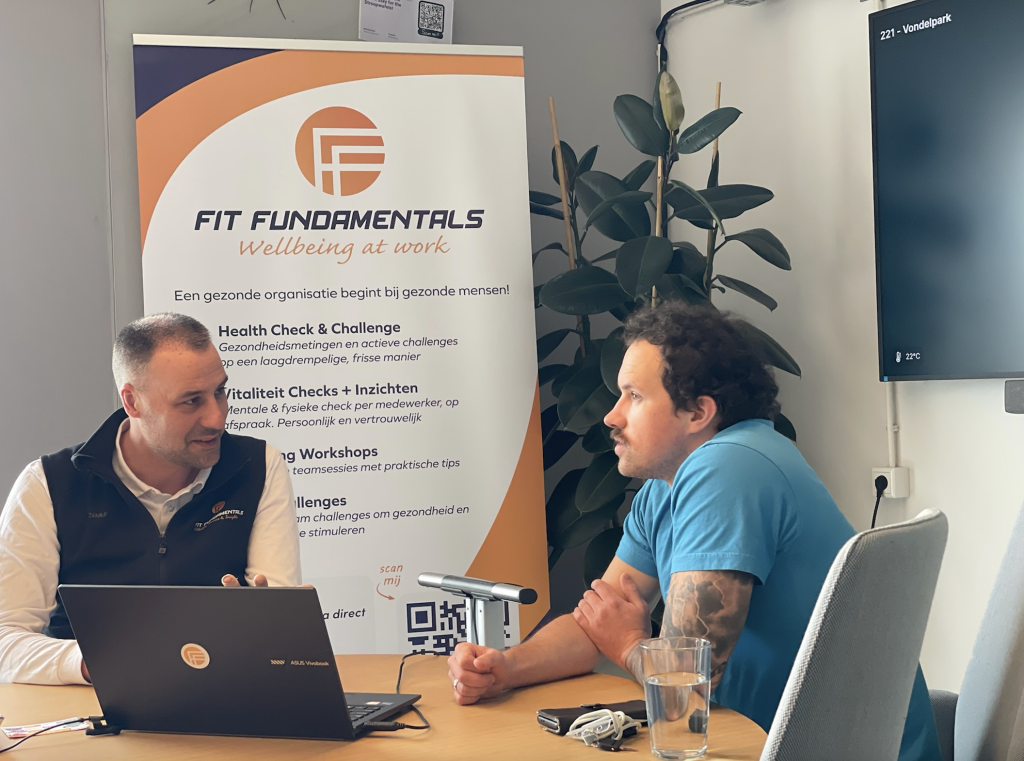
Participants' experience, and what it yielded
What struck us was the show Of the reactions: down-to-earth, positive and surprisingly personal. Not "another program," but "Hey, this feels feasible." A common feedback:
"Great to do this with colleagues! Especially loved the mix of Recharge program and live events."
What employees appreciated
- Connection without obligation
Doing something together (workouts, morning plunge) proved to be a quick icebreaker. The team vitality grows when you take small steps together. - Small steps, real effect
Health checks + coaching made choices concrete: one extra break walk, a better lunch, five minutes of mind fitness. Micro habits rather than grand intentions. - Variation works
The mix of physical, mental and practical (nutrition) kept it fresh. Someone who doesn't like workouts hooked up with a talk or challenge - and vice versa.
What HR had to gain
- Insight rather than assumptions
Data and feedback provided direction: what formats score, what times work, how does live energy relate to digital follow-up? - Unburdening
One point of contact, script, communication kits, hosting support and reporting. HR was able to focus on internal sponsorship and support. - Breakthrough points
Instead of "finished," the week delivered handles for follow-up: what routines do we stick to, what teams want more, what content deserves deepening?
What we learned (nuance)
- Choice is crucial. Not everyone wants to go into the water; an equal, dry option prevents dropout.
- Short formats win in busy weeks: 10-20 minutes is often better than 60.
- Live + digital is not an either/or. Live builds emotion and commitment; digital secures behavior.
What lingers
No grand promises, but visible ones rhythms: mini-workouts between calls, just a little better food choices, five minutes of breathwork before that board update. And above all: the feeling that you have this together does, with colleagues, supported by a vitality program that practical, measurable and sustainable is.
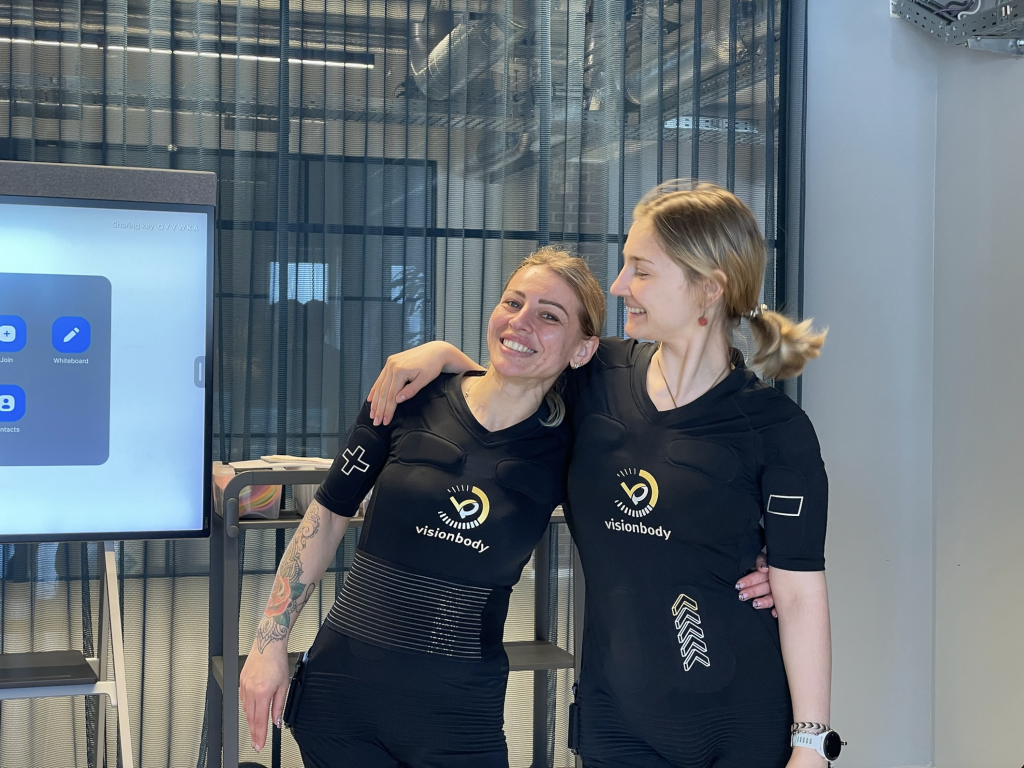
Why this model works for other organizations
Not every organization is Personio, but the principles behind this Health Week are broadly applicable. They are design choices that support rather than force behavior.
What sets this model apart:
- Experience > explain. You remember what you do. We link live energy (workouts, morning plunge) to short, concrete actions that people choose for themselves.
- Choice & inclusiveness. Variation in intensity and formats makes the vitality program accessible to everyone - not just the sporty.
- Rhythm rather than peak. The week is a kickstart, not an end point. The digital platform secures continuity with micro habits.
- Behavioral design. Small steps, clear prompts, social nudges (team competition) and reduce friction (in the office, short sessions).
- Unburdening HR. One playbook, one point of contact, communication kits and a measurement framework. HR remains director without additional burden.
- Measuring what matters. Participation, feedback, engagement and behavioral indicators provide direction for follow-up - not to check off, but to improve.
What does this mean practically for your organization?
- Start with a light scan. No research marathon; a compact wellbeing analysis to prioritize themes.
- Design a logical flow. Kick-off → experience formats → coaching/health checks → digital assurance. Let each step connect to the previous one.
- Always offer two routes. For each activity, a quiet one and a more intense one. This way you prevent dropout and increase team vitality.
- Think in 10-20 minutes. Short sessions win out over long workshops in a busy work week.
- Automate activation. Clear daily goals, micro-challenges and reminders through internal channels. Everyone knows what, where and when.
- Sponsor from above. A short, personal message from leadership increases legitimacy and participation.
- Schedule follow-up immediately. Put in the calendar: 30/60 days after Health Week a check-in, new micro-challenge and a brief update.
- Choose 2-3 anchors. For example: a weekly mini-workout, a team walk and a monthly mind-fitness session. Less is more - if you stick with it.
Common pitfalls (and how to avoid them):
- Too many separate activities → Clustering in themes with one clear daily goal.
- One size fits all → Always an alternative offering.
- No measurement framework → Prior Define what you want to learn and how you will measure it.
- Overprogramming → Rest moments build in; welfare is not a full agenda.
- Moralistic frame → Practical and inviting communicate, without guilt language.
Results: a vitality program that doesn't feel like "extra work," but as a better way of working - and that shifts employee wellbeing from cost to sustainable performance.

From Health Week to Culture
A good Health Week is not a flare, but a spark. The success is in the architecture: live experience to feel, personal guidance to translate into behavior, and digital support to make the sustain. That was the premise at Personio, and that's why the effect didn't stop on Friday afternoon.
Important insights to take away:
- Behavior changes in small ways. Micro habits beat big intentions.
- Together is stronger. Team dynamics accelerate adoption and make it fun.
- Measurement gives direction. Not to prove you were "right," but to build on smarter.
- Unburdening makes scalable. HR can set the course, we handle the execution.
If you approach well-being as organizational skill, something you design, test and improve, then a Health Week becomes a starting point for culture change. Not more spectacular, but more sustainable.
Follow-up (subtle and practical):
Want to see what this approach might look like for you? Ask our Health Week Kickstart Kit to (mini-draft, sample schedule, measurement framework and communication templates). This allows you to see at a glance how to go from intention to workable implementation goes - without noise, without fuss.
If you want, I'll write the title + intro section for the blog page (hero) with a sharp proof-hook, and I make a short CTA block at the bottom that fits your site.

World Health Organization. (2020). WHO guidelines on physical activity and sedentary behavior.. World Health Organization. https://iris.who.int/bitstream/handle/10665/336656/9789240015128-eng.pdf WHO IRIS
World Health Organization. (2022, September 28). Guidelines on mental health at work.. World Health Organization. https://iris.who.int/bitstream/handle/10665/363177/9789240053052-eng.pdf WHO IRIS
Gallup. (2025). State of the Global Workplace 2025. Gallup. https://www.gallup.com/workplace/349484/state-of-the-global-workplace.aspx Gallup.com
Organization for Economic Co-operation and Development (OECD). (2022). Promoting health and well-being at work. OECD Publishing. https://www.oecd.org/en/publications/promoting-health-and-well-being-at-work_e179b2a5-en.html OECD
National Institute of Public Health and the Environment (RIVM). (n.d.). Exercise - Lifestyle Monitor. Accessed Sept. 19, 2025, from https://www.rivm.nl/leefstijlmonitor/bewegen RIVM
Health Council. (2017, Aug. 22). Exercise Guidelines 2017: Summary (PDF). Health Council. https://www.gezondheidsraad.nl/binaries/gezondheidsraad/documenten/adviezen/2017/08/22/beweegrichtlijnen-2017/samenvatting-Beweegrichtlijnen-2017.pdf Health Council
TNO. (2024, Nov. 11). Work stress: fact sheet Week of Work Stress 2024 (PDF). TNO. https://publications.tno.nl/publication/34643312/eodWUtaj/TNO-2024-werkstress.pdf publications.tno.co.uk
Personio (n.d.). Employee wellbeing at work: Importance, benefits, initiatives (HR Lexicon). Accessed Sept. 19, 2025, from https://www.personio.com/hr-lexicon/employee-wellbeing-at-work/ Personio
Harvard Health Publishing. (2025, May 1). Research highlights health benefits from cold-water immersions. Harvard Medical School. https://www.health.harvard.edu/staying-healthy/research-highlights-health-benefits-from-cold-water-immersions Harvard Health
Harvard Health Publishing. (2025, June 1). Cold plunges: Healthy or harmful for your heart? Harvard Medical School. https://www.health.harvard.edu/heart-health/cold-plunges-healthy-or-harmful-for-your-heart Harvard Health

